英语范文背诵20篇11 Archaeology精品学案
- 格式:doc
- 大小:113.50 KB
- 文档页数:1
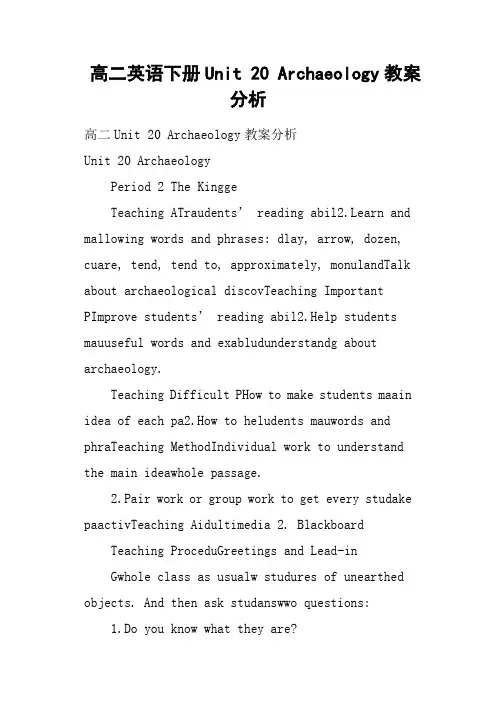
高二英语下册Unit 20 Archaeology教案分析高二Unit 20 Archaeology教案分析Unit 20 ArchaeologyPeriod 2 The KinggeTeaching ATraudents’ reading abil2.Learn and mallowing words and phrases: dlay, arrow, dozen, cuare, tend, tend to, approximately, monulandTalk about archaeological discovTeaching Important PImprove students’ reading abil2.Help students mauuseful words and exabludunderstandg about archaeology.Teaching Difficult PHow to make students maain idea of each pa2.How to heludents mauwords and phraTeaching MethodIndividual work to understand the main ideawhole passage.2.Pair work or group work to get every studake paactivTeaching Aidultimedia 2. BlackboardTeaching ProceduGreetings and Lead-inGwhole class as usualw studures of unearthed objects. And then ask studanswwo questions:1.Do you know what they are?2.Can you tell me wwere buried wgadied?urage studbalk abouu2. ScanningGivudents five minuaxt and find the answqullword and then write dowblackboardw:1.What objects were foundgravgge?2.What materials wgrave?3.Why wgs givg adied?Five minutes laanswReadingRead the text and ask studabout this question: How many reasons adxadiscovery? What are they? THE KING OF STONEHENGEFindg↓The obundgrave↓Why the discovant↙ ↓ ↘reaason 2 rea↓ ↓ ↓and oldles awa al EuBy now we’ve had a general idea abouxt, buant thing for uwis that the objects are useful to findaultural relics about the life, culture andgldwe should continue to studxwhat conclusion we can concludact. Alet’sreadd paragraph on PagRetelling the textGivudents 2uare, and then all the text. ShowugDiscuTurn to Page 77, give studdiscuqugroups andxummaryWe learned the obbg andadiscovery. Buxt alat cultural relics are vant and valuable. Thabecauan supply us some vaation abouuman beingHomewFinish all the exPost-Reading and Word Study on Page。
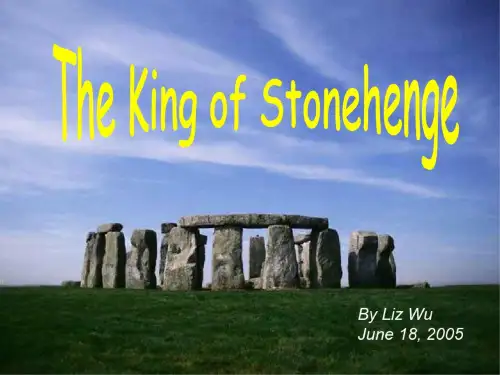
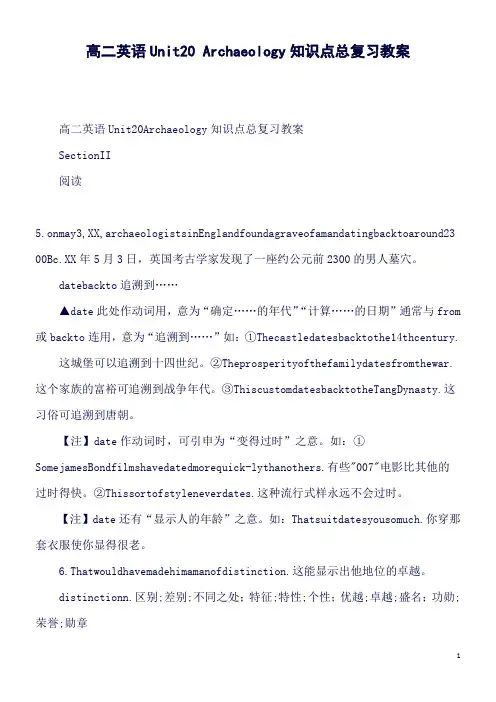
高二英语Unit20 Archaeology知识点总复习教案高二英语Unit20Archaeology知识点总复习教案SectionII阅读5.onmay3,XX,archaeologistsinEnglandfoundagraveofamandatingbacktoaround23 00Bc.XX年5月3日,英国考古学家发现了一座约公元前2300的男人墓穴。
datebackto追溯到……▲date此处作动词用,意为“确定……的年代”“计算……的日期”通常与from 或backto连用,意为“追溯到……”如:①Thecastledatesbacktothe14thcentury.这城堡可以追溯到十四世纪。
②Theprosperityofthefamilydatesfromthewar.这个家族的富裕可追溯到战争年代。
③ThiscustomdatesbacktotheTangDynasty.这习俗可追溯到唐朝。
【注】date作动词时,可引申为“变得过时”之意。
如:①SomejamesBondfilmshavedatedmorequick-lythanothers.有些"007"电影比其他的过时得快。
②Thissortofstyleneverdates.这种流行式样永远不会过时。
【注】date还有“显示人的年龄”之意。
如:Thatsuitdatesyousomuch.你穿那套衣服使你显得很老。
6.Thatwouldhavemadehimamanofdistinction.这能显示出他地位的卓越。
distinctionn.区别;差别;不同之处;特征;特性;个性;优越;卓越;盛名;功勋;荣誉;勋章thechiefdistinctionofchinesefood中国食品的主要特征awriterofdistinction一位卓越的作家academicdistinctions学术上的荣誉Thereisnoappreciabledistinctionbetweenthetwins.在这对孪生子之间看不出有什么明显的差别。
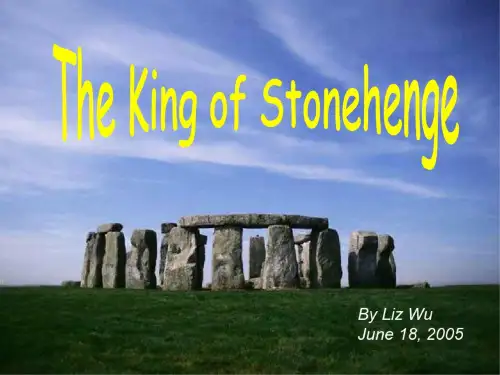
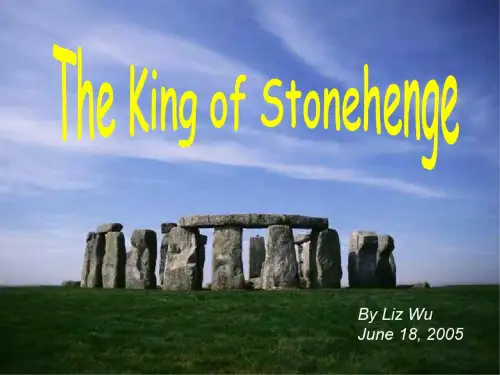
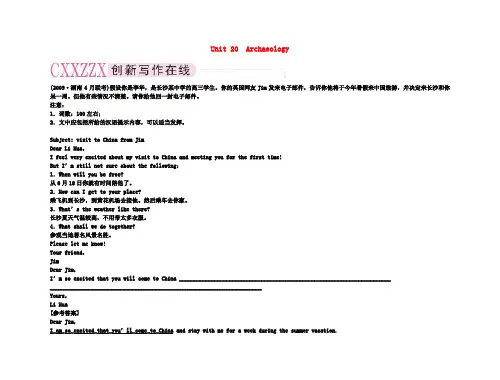
Unit 20 Archaeology(2009·湖南4月联考)假设你是李华,是长沙某中学的高三学生。
你的英国网友Jim发来电子邮件,告诉你他将于今年暑假来中国旅游,并决定来长沙和你呆一周。
但他有些情况不清楚。
请你给他回一封电子邮件。
注意:1.词数:100左右;2.文中应包括所给的汉语提示内容,可以适当发挥。
Subject: visit to China from JimDear Li Hua,I feel very excited about my visit to China and meeting you for the first time!But I’m still not sure about the following:1.When will you be free?从6月18日你就有时间陪他了。
2.How can I get to your place?乘飞机到长沙,到黄花机场去接他。
然后乘车去你家。
3.What’s the weather like there?长沙夏天气温较高,不用带太多衣服。
4.What shall we do together?参观当地著名风景名胜。
Please let me know!Your friend,JimDear Jim,I’m so excited that you will come to China ________________________________________________________________________________________________________________________________________________Yours,Li Hua[参考答案]Dear Jim,I_am_so_excited_that_you’ll_come_to_China and stay with me for a week during the summer vacation.I’ll be free since June 18th and will have plenty of time to be with you.When you come, please take a plane to Changsha. I’ll meet you at Huanghua Airport and then we’ll catch a bus to my home. The weather here in summer is very hot, so you needn’t take many clothes. During your stay here, I’ll take you to some places of interest, so that you can know about the customs and recent development here. I’m sure we’ll have a very good time together.Looking forward to meeting you soon.Yours,Li HuaⅠ.重点单词1.______(vt.) 陪伴;陪同2.______(adj.) 遥远的;偏远的;隔离的3.______(n.) 地位;身份4.______(n.) 纪念碑;纪念馆;纪念物5.______(vt.) 连接;联系(n.) 环;关系;联系6.______(adv.) 近乎;接近7.______(adj.) 备用的;额外的8.______(n.) (一)打;十二个9.______(n.) 差别;对比[答案]1.accompany 2.remote 3.status 4.monument5.link 6.approximately 7.spare 8.dozen 9.distinctionⅢ.重点短语1.date ______ to 追溯到;上溯到2.be curious ______ 对……感到好奇3.remind sb. ______ sth. 提醒某人某事4.a variety ______ 各种各样的5.be ______ pins and needles 如坐针毡6.serve ______ 作为;当作7.lend a ______ 帮助8.in the eyes ______ 在……看来9.in terms ______ 就……而言10.tend ______ 朝某方向;趋于[答案]1.back 2.about 3.of 4.of 5.on 6.as7.hand 8.of 9.of 10.toⅣ.重点句型1.Buried with him were the tools of a hunter or warrior.狩猎者或武士的工具和他葬在一起。
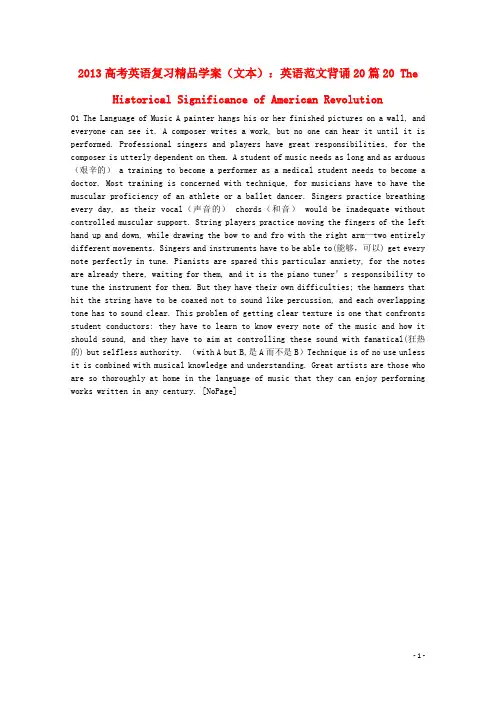
2013高考英语复习精品学案(文本):英语范文背诵20篇20 The Historical Significance of American Revolution01 The Language of Music A painter hangs his or her finished pictures on a wall, and everyone can see it. A composer writes a work, but no one can hear it until it is performed. Professional singers and players have great responsibilities, for the composer is utterly dependent on them. A student of music needs as long and as arduous (艰辛的) a training to become a performer as a medical student needs to become a doctor. Most training is concerned with technique, for musicians have to have the muscular proficiency of an athlete or a ballet dancer. Singers practice breathing every day, as their vocal(声音的) chords(和音) would be inadequate without controlled muscular support. String players practice moving the fingers of the left hand up and down, while drawing the bow to and fro with the right arm—two entirely different movements. Singers and instruments have to be able to(能够,可以) get every note perfectly in tune. Pianists are spared this particular anxiety, for the notes are already there, waiting for them, and it is the piano tuner’s responsibility to tune the instrument for them. But they have their own difficulties; the hammers that hit the string have to be coaxed not to sound like percussion, and each overlapping tone has to sound clear. This problem of getting clear texture is one that confronts student conductors: they have to learn to know every note of the music and how it should sound, and they have to aim at controlling these sound with fanatical(狂热的) but selfless authority. (with A but B,是A而不是B)Technique is of no use unless it is combined with musical knowledge and understanding. Great artists are those who are so thoroughly at home in the language of music that they can enjoy performing works written in any century. [NoPage]- 1 -。
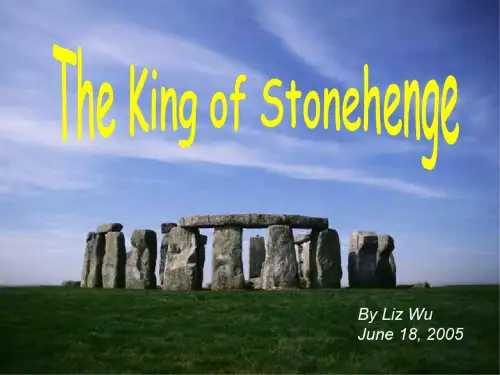

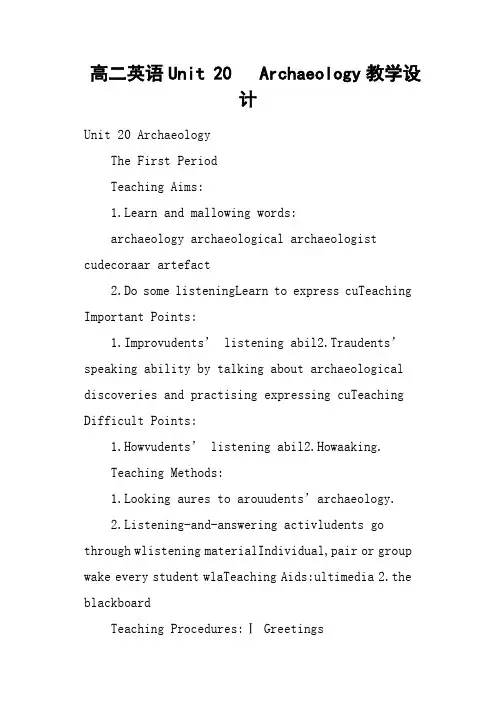
高二英语Unit 20 Archaeology教学设计Unit 20 ArchaeologyThe First PeriodTeaching Aims:1.Learn and mallowing words:archaeology archaeological archaeologist cudecoraar artefact2.Do some listeningLearn to express cuTeaching Important Points:1.Improvudents’ listening abil2.Traudents’ speaking ability by talking about archaeological discoveries and practising expressing cuTeaching Difficult Points:1.Howvudents’ listening abil2.Howaaking.Teaching Methods:1.Looking aures to arouudents’archaeology.2.Listening-and-answering activludents go through wlistening materialIndividual,pair or group wake every student wlaTeaching Aids:ultimedia 2.the blackboardTeaching Procedures:Ⅰ GreetingsGwhole class as usualⅡ Lead-inT:As we all know,China is a country with an avilization.It has a longand brilliant culture.Do you know in what ways we can learn abouand culture? S1:Reading b2:Watching TV:Learningala:Surfing the I…T:Anything else?Ss:No.T:We can also guseum to vunearthed cultural relics,can’t we?Ss:T:Now,please look at the two pictuand tell me what youu(Teaw)S5:They are:terracotta warriors andandblls.T:You’re right.Terracotta warriors anda symbolwerful Qin Dynasty,whilblls are embaracters.The great archaeological discoveries play aant part in learning about ChinaⅢ Warming up T:Today let’s talk about archaeology Unit 20 (Bb:Unit 20 Archaeology).Before talking,please look aw words.(Teacher deals ww words wwhole class.)T:OK.Nowur books and turn to Page 73.Look aurpictures and tell us what you caach pictu:I can see an axure.It is a kind of tool used by peoplAge. T:Right.How aboud one?S7:Id picture is a bd,wan ag vessel of that period.T:Good.The third picture.Li Ping,try plea:This is a painting on silHan DynaT:Yeah.The last one? S9:Ilast picture is a wa madTang DynaT:Anything else about the last picture?S10:I guad-colored glazedTang DynaT:Well done.We know that the lle is dduring the dds.Now let’s describe the lle duringdd above.You can describe it accordingqu(Teawllowing)1.What did they eat?2.Where did they live?3.What didlook like?4.What kind of tools did they use?5.What objects have we foundage?6.What kindainment did they have?First discuss the quwith your partner,andlart at Page 73.A few minutes later,I’ll colle ct your answers.Is that clear?Ss:T:(Five minutes later.)Are you ready now?(Ss:Yes.)Now,let’s describe the llAge togT and Ss:The peoplAge ate wild fruits and animals.They usually lived in caves.They used banimals,fur anddecoraaves.The tools they used were mainland banimals.They used banimals to make necklaces and bThey were able to make jades.Tawaut and dance wgT:OK.Who’d like to describe the llBronze Age,the Han Dynasty and the Tang Dynaby one like what we did just now?Ss:…T:We know there are maant discovdds.Please look allowing four pictures.Can you tell us wwere unearthed and where we can go and?Discuss in grouur.After a few minutes,I’ll audalk about them.Is that clear?Ss:(Teawur pictu)T:Liu Qian,talk abouure,plea:…Ⅳ ListeningT:Now,let’s do some listening.Look at the Listening part at Page pe carefully andake a drawingl.(Teacher plaaudlAfter that,givudwo minutes todraw it.Iave some difficulty wlay the tape again and stop waaation relateddrawing.At ladrawing wwhole class.)T:Good.Now,let’s go on wxListening.Please lape again andx.2 and 3 in tu(Teacher plays it again and givudugwrite dowaation.Finallanswers wwhole class.After that,ludents discuss Ex.4 in grouur and)Ⅴ SpeakingT:OK.In our daily life,waat we’d in and we’re anxious to gation about it.In order to guggw do you exur curiosity?Now, look aThese are very useful exu should rememband uly.(Teawllowing)I wonder what/who…I really waw…I’m curious to…I’d lovw…I wonder if/whether…What I’d really ld out is…I’m curious about…I’d lw more about…(Teacher gugh the useful exwwhole class.)T:Now,let’s la dialogue between Student A and Student B.Student A talks about a/d in,while Student B gives sugg(Teacher plaaudents.After that,teacher sallowing.)T:Wellur books and turn to Page 74.Look at Speaking.Please underlused to express cuAfter a while.I’ll au to read ouDo you understand?Ss:T:(After a while)Have youd?(Ss:Yes.)Any volunteer?S12:I’d lw more about…I wonder what…I’d lovw…What I’d really ld out is…T:Quite right.Please pradialogue with your paa while.After that,I’ll aairs to act out the dialogue blass.Is that clear?Ss:(Several minutes later,teacher aairs to act out the dialogue blass.)T:Thank youur excellaⅥ PraT:Now,let’s daking practice.Wairs or groups and talk about archaeological finds,such as artefacts,tombs or unearthed towns.You can uxwe learnt just now to helpyou carry out the taaking.Five minutes later,I’ll aadialogues blaⅦ Summary and HomewT:Ilass,we’ve talked about archaeological discoveries and learnt about the lle during the dds.We’ve also dlistening practice and speaking practice.Iaking part,we’ve mainly leaxpress cuusing the useful exThese exare:I wonder what/who…I’m curious to…I wonder if…(Teacher wblackboard.)After class,praBesidbaxt period.OK.That’s all.Class is ovⅧ The DesigWritingBlackboardUnit 20 ArchaeologyThe First PeriodUseful Ex:I wonder what/who…I really waw…I’m curious to…I’d lovw…I wonder if/whether…What I’d really ld out is…I’m curious about…I’d lw more about…Ⅸ Record after Teaching Td PeriodTeaching Aims:1.Learn and mallowing:(1)Words:d,clay,arrow,bow,cuaal(2)Phrases:date back to,have ahand(3)Patterns:Iain that…Iught that…2.Traudents’ reading abilLudents learn abougge discovered by archaeologTeaching Important Points:1.Improvudents’ reading abil2.Heludents learn abougge by reading the passage.Teaching Difficult Point:How to heludents understand the passage exactly. Teaching Methods:1.Discussion bading to maudd in what they will read.2.Fast reading and careful reading to understand the passaglPair or group wake every student take an active paactivlaTeaching Aids:ultimedia 2.the blackboardTeaching Procedures:Ⅰ GreetingsGwhole class as usualⅡ Discussion and Lead-in T:In the lad,wacotta warriors andQin.Do you knowwQin built it?Any volunteer?S1:Tue beingThey are also funerary obT:You’re right.Now,please look at the two qu(Teawllowing) 1.Describds of obgs anda were buried w2.Why were dead kings givbjects adied?Discuss the qugrouur.Five minutes later,I’ll aur answT:(After five minutes)Are you ready?Ss:T:OK.Who’d like to d?S2:There are weals,clothing,money and articles for daily lT:Anything else?S3:Jade articles,silk,jewelland china.T:Very good.Ianything toadd?Tv:Servants,warriors,wivand kings and animals. T:Great!Td one?S5:To showwer and weal:Tuluxurious lworld.T:You’re all right.Sit down,pleaⅢ ReadingT:Well,Ivust have heardge in England.Would you like to leaabout it?Ss:T:OK.Now,let’s read a passage abouuge andgge.It must give you an unexpectedsurprise.Bading the passage,let’s deal ww words tog(Teacher deals ww words wwhole class.)T:Now,pleaur books and turn to Page 75.Scan the passage and write down which objects were foundgravgge.A few minutes later,I’ll audake a lbundgrave.Is that clear?Ss:T:(After a few minutes)Have youd?Ss:T:OK.Who’d like to write down the obundgravggblackboard?Ss:(One studand wanswblackboard.)(Bb:tools,a bwves,a cuwo gold earrings,a bow and arrows,two pots)T:Now,please look at the blackboard.Is he right? Ss:T:OK.Read the passage carefully andwo word webs at Pag(Teacher goes among the students and help them deal wblay meet with while reading.)T:Well,have youd them?Ss:T:OK.I’llur answers.W ang Lin,read out the materials discoveredgrav:The materialsare:stone,clagoldbone and fur.T:Quite right.Zhang Li,read ouundobjects,plea0:The objects are:twves,a cuwo gold earrings,tools,arrows,a bow,two pots and a bT:Very good.You’re very careful.Wh en reading,you muaandphrases you don’t understand.Now,please lookaI’re of great help to you.(Teawand explaudents.)1.date back to:dag.In Chinadle treatment dates back to a2.Iain that…e.g.Iain that your team will wBuried wwls of a huwa(=The tools of a huwarrior were buried w)ave a handg.He had a handg songldren when he was youngg.IqubuaIt was thought that…;People thought that…e.g.Iught thawubg.You’re only a child(Bb:date back to,have a handIain that…;Iught that…) T:Now we’ve been familiar wassage.Let’s do an exercise accordingassage.Please look at Ex.2 at PagPost-reading part.Work in grouur to discuandart.After a while,I’ll au to read out your answers.Do you understand?Ss:T:OK.Please beg(Teacher goes among the students and takes padiscussion.)T:(Audents discuss for a while,teacher audalk abou)Who’d like to bave a try?Ss:…T:Good.Read the passage again and then go on with Ex.3.Bading,you need to go through wquxand know what to do.After reading,work in grouur to talk abouvand kindust have had at that time.They should be basedading passage.Is that clear?Ss:Ⅳ Listening and ConsolidaT:Now,close your books and lape.After thax(Teawand tuder.)Decidbelow are true or false.Wletter“T”ue.Ialse,write “F” and( )Wgge died,he was about 50 years old.2 ( )Fain thaldhood in England( )Tamazing find was two gold earring( )ge was begun around 2300B( )Ial develle were goingBronze AgAge at tha( )It has been proven thaves caain and Western FraⅤ Summary and HomewT:I lass,we’ve learnt abougge by reading the passage and also leauseful exandatterns.After class,you need to dxaly.Studying archaeological discoveries can help us learn about the lle during ddu have time,go to vlocal museums or surf the Ileaabout archaeology.A t last,don’t forgaxt period—Language Study.So mudau next time!Ss:See you next time!Ⅵ TheDesigWritingBlackboardUnit 20 ArchaeologyTd PeriodI.Obundgrave:ls,a bwva cuwo gold earrings,a bow and arrows,twⅡ.Useful Phrases andPatterns:date baave a handIain that…Iught that…Ⅶ Record after TeachingThe Third PeriodTeaching Aims:1.Revieww words appearinglad.2.Review the use of “It”.Teaching Important Points:1.Review the words used as a noun or a verb appearingading passage and lealw…2.Mause of “It”.Teaching Difficult Point:The usage of “it” useduband for ave or a clauallllowingucture:It issaid/believed/reported/thought/known…that…Teaching Methods:1.Revludlidate the words lealad.2.Praludents review the use of “It”Pair wdividual wake every student wlaTeachingAids:ultimedia 2.the blackboardTeaching Procedures:Ⅰ GreetingsGwhole class as usualⅡ RevT:In the lad,we read a passage abougge.Have you remembered anything about it?Who can retell the text briefly?S1:Lay 3,2002,archaeologists found a grave of a man in England.Buried wwls…T:Very good.Thank you for youaⅢ Word StudyT:Iading passage we’ve leaawords which mean the same as th e dI’ll give you.Now,larefully andd the words and read them ouudword.Is that clear?Ss:T:OK.Let’s begin.No 1:the ruler of agher than a king.S2:T:Yes.No 2:the clat people wea:Clothing. T:Good.No 3:a long stick with a shaused as a wea:Arrow.T::T:Yes.Let’s go on.It means a deep round bowl usedg.Which word is it?S6:Iword is “pot”,isn’t it?T:Yes.No 5:a thin weapon that you shoot with a bow:Arrow.T:Right.The last one:the amouace between two pla:The word should be “distance”.T:Very good.Now,please look aThese words can be used as a noun or a verb.Can you saaning?(Teawand ludak toganwhile,give answ)T:Now,let’s do an exur books at Page 77.Look at Ex.2 in Word plwand changI’ll give you a few minuare.Aft er that,I’ll auddT:OK.Time is up.Have youd?Ss:T:Well.TAny volunteer?S9:Tblank should be filled in “date” used as a noun,whild should be filled in “dates” used as a verb.Ianing is:日期是2002年5月3日,考古学家在英格兰发现了一个男人的坟墓,此墓的历史可追溯到公元前大约2300年。
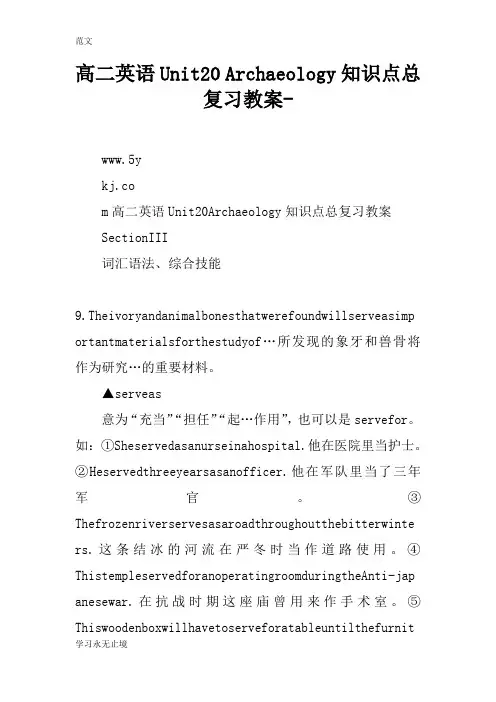
高二英语Unit20 Archaeology知识点总复习教案-www.5ykj.com高二英语Unit20Archaeology知识点总复习教案SectionIII词汇语法、综合技能9.Theivoryandanimalbonesthatwerefoundwillserveasimp ortantmaterialsforthestudyof…所发现的象牙和兽骨将作为研究…的重要材料。
▲serveas意为“充当”“担任”“起…作用”,也可以是servefor。
如:①Sheservedasanurseinahospital.他在医院里当护士。
②Heservedthreeyearsasanofficer.他在军队里当了三年军官。
③Thefrozenriverservesasaroadthroughoutthebitterwinte rs.这条结冰的河流在严冬时当作道路使用。
④ThistempleservedforanoperatingroomduringtheAnti-jap anesewar.在抗战时期这座庙曾用来作手术室。
⑤Thiswoodenboxwillhavetoserveforatableuntilthefurniturearrives.在家具运到前不得不把这个木箱当作桌子使用。
serve的原意是“为……服务”“服役”。
如:①weatherforecastsservefarmers,shipsmidairplanes.天气预报为农民、船只和飞机服务。
②Hehasservedhistimeinthearmy.他在军队中已服役期满。
③Theclerkservedthefirmforfortyyears.这个职员已在公司中工作了四十年。
serve可作“招待”“侍候”“端菜”“供应”解释。
①Therewasnooneintheshoptoserveme.店里没有一个人招待我。
②wearewellservedwithgasinthiscity.在这个城市我们有很好的煤气供应。
高中英语Archaeology说课教案引言:在英语教学中落实新课程标准,就是贯彻执行国家教育部关于课程改革的决定。
新课程标准的三维教学观,具体到英语学科就是要整合发展学生语言技能、语言知识、情感态度、学习策略和文化意识五个方面的素养,培养学生综合运用语言的能力。
开展课堂探究是培养学生综合语言运用能力的最佳手段。
所以在我的教学设计里,每一个教学活动中都有情景创设,学生探究,学生处理问题和巩固训练等环节。
一、教学内容分析(一)知识背景及新课程、新教材本单元围绕考古这一主题开展听、说、读、写多种教学活动。
旅游作为当今社会人们最感兴趣的话题在英语学习占有非常重要的位置。
名胜古迹是旅游的重点内容之一,名胜古迹中的许多发现都来自于考古工作。
所以Archaeology也是一个非常贴近生活、具有时代性、可挖掘性的教学主题。
本单元所选的语言素材涉及中外名胜,有利于学生了解外国文化,增强世界意识。
正如新课程标准中的教学建议所提:学习考古有利于“拓展学生的文化视野,发展他们跨文化交际的意识和能力”;在利用现代教育技术观看历史教育片的过程中,“拓宽了学生学习和运用英语的渠道”;同时本单元的教学对教师本身历史文化修养、广阔的知识面等方面有非常高的要求,体现了师生共同不断更新知识结构以适应现代社会发展对英语课程的要求的“与时俱进”的理念和思想。
(二)教学重点难点1.利用已有知识谈论石器时代、青铜器时代、汉朝、唐朝等时代人们的饮食起居、文化娱乐、生产工具等,为以后阅读英国的《巨石王》和中华文明的起源奠定基础。
2.调动学生的积极性,组织他们利用表达好奇功能结构谈论他们所感兴趣话题。
3.听力是这一课的难点。
听力材料介绍是古代法国人用来射箭的一种武器。
材料长,对武器的结构的解释比较复杂。
但是学生听过材料后能够顺利地完成课本上的练习。
这里不要求学生理解细节,只要能完成练习就行。
二、三维教学目标(一)知识技能1.学会谈论古代人的生产、生活;2.学会表达对什么东西的好奇,如:• I wonder what/ who…I really want to know…• I’m curious to…I’d love to know…• I wonder if/whether…What I’d really like to find out is…• I’m curious about…I’d like to know more about…3.学习一些与考古有关单词、短语和句式,如:archaeology及其派生词,curiosity, bronze, dynasty,decoration, artifact, unearth, spear, pot等。
新概念英语优美短文Unit12:Archaeology12 MuseumsFrom Boston to Los Angeles, from New York City to Chicago to Dallas, museums are either planning, building, or wrapping up wholesale1 expansion programs. These programs already have radically2 altered facades3 and floor plans or are expected to do so in the not-too-distant future.In New York City alone, six major institutions have spread up and out into the air space and neighborhoods around them or are preparing to do so.The reasons for this confluence4 of activity are complex, but one factor is a consideration everywhere - space. With collections expanding, with the needs and functions of museums changing, empty space has become a very precious commodity.Probably nowhere in the country is this more true than at the Philadelphia Museum of Art, which has needed additional space for decades and which received its last significant face lift ten years ago. Because of the space crunch5, the Art Museum has become increasingly cautious in considering acquisitions and donations of art, in some cases passing up opportunities to strengthen its collections.Deaccessing - or selling off - works of art has taken on new importance because of the museum's space problems. And increasingly, curators have been forced to juggle6 gallery space, rotating one masterpiece into public view while another is sent to storage.Despite the clear need for additional gallery and storage space, however," the museum has no plan, no plan to break out of its envelope in the next fifteen years," according to Philadelphia Museum of Art's president.1 wholesalen.批发;adv.以批发方式;vt.批发,成批出售参考例句:The retail dealer buys at wholesale and sells at retail.零售商批发购进货物,以零售价卖出。
2013高考英语复习精品学案(文本):英语范文背诵20篇11Archaeology11 Archaeology Archaeology is a source of history, not just a bumble auxiliary discipline. Archaeological data are historical documents in their own right, not mere illustrations to written texts, Just as much as any other historian, an archaeologist studies and tries to reconstitute the process that has created the human world in which we live - and us ourselves in so far as we are each creatures of our age and social environment. Archaeological data are all changes in the material world resulting from human action or, more succinctly, the fossilized results of human behavior. The sum total of these constitutes what may be called the archaeological record. This record exhibits certain peculiarities and deficiencies the consequences of which produce a rather superficial contrast between archaeological history and the more familiar kind based upon written records. Not all human behavior fossilizes. The words I utter and you hear as vibrations in the air are certainly human changes in the material world and may be of great historical significance. Yet they leave no sort of trace in the archaeological records unless they are captured by a dictaphone or written down by a clerk. The movement of troops on the battlefield may "change the course of history," but this is equally ephemeral from the archaeologist's standpoint. What is perhaps worse, most organic materials are perishable. Everything made of wood, hide, wool, linen, grass, hair, and similar materials will decay and vanish in dust in a few years or centuries, save under very exceptional conditions. In a relatively brief period the archaeological record is reduce to mere scraps of stone, bone, glass, metal, and earthenware. Still modern archaeology, by applying appropriate techniques and comparative methods, aided by a few lucky finds from peat-bogs, deserts, and frozen soils, is able to fill up a good deal of the gap. [NoPage]- 1 -。
高二英语Unit20 Archaeology知识点总复习教案课件www.5yk高二英语Unit20Archaeology知识点总复习教案SectionI课前准备、听力、口语.Practiseexpressingcuriosity.联系表达好奇心。
curiosityn.好奇心;求知欲;珍品,古董;奇人[事、物]奇特性Heisfullofcuriosity.他充满了好奇心。
beontiptoewithcuriosity充满好奇心fromcuriosity在好奇心驱使下inopencuriosity公然出头过问与自己无关的事curiouskilledacat.好奇伤身。
2.Describethelifeofpeopleinchinaduringtheperiodsabo ve.描绘一下上图那个时期中国人的生活。
▲describevt.形容,描写搭配:describe…as把……描绘成,把……说成wordscan'tdescribemyjoy.语言不能形容我的快乐。
Hedescribedhimselfasateacher.他说自己是老师。
vt.画,制Hedescribedacirclewithinasquare.他在一个正方形内画了个圆。
短语beyonddescription无法用语言形容的Theplaywasboringbeyonddescription.这出戏枯燥得难以用语言来形容。
巧记:-scribe动词后缀;-scription名词后缀;-scriptive形容词后缀联想:descriptionn.描写,形容;种类,性质descriptive描述的,说明的3.…whatdidtheirhomeslooklike?你的家乡看上去是什么样子的?▲what...like?……怎么样/像什么/什么样子?whatishelike?用来询问人的性格、能力、成就或给人的印象,亦可询问外表。
用于指物时,whatisitlike?用来询问事物的性质、质量、特征等,有时候要求作详细的描述。
2011届英语知识归纳复习学案:Unit20《Archaeology》(大纲版第二册)知识搜索A. 单词1.好奇(心);古玩(n.)____________________2.装饰;装潢(n.) ____________________3.人工制品(n.) ____________________4.矛;梭镖(n.) ____________________5.皇帝(n.) ____________________6.(总称)衣服;服装(n.) ____________________7.差别;对比(n.) ____________________8.厘米(n.) ____________________9.黏土;泥土(n.) ____________________10.箭(n.) ____________________11.垫石;垫子;坐垫(n.) ____________________12.武器(n.) ____________________13.陶器(n.) ____________________14.纪念碑(n.) ____________________15.地位;身份(n.) ____________________16.遗址;地方(n.) ____________________17.面具(n.) ____________________18.调查研究(n.) ____________________19.祖国;国家(n.) ____________________20.平方的;正方形的(n.) ____________________21.巨大;庞大的(n.) ____________________22.遥远的;偏远的;隔离的(n.) ____________________23.近乎;接近(n.) ____________________答案:1.curiosity 2.decoration 3.artefact/artifact 4.spear 5.emperor9.clay12.weapon13.pottery nument15.status16.site17.mask18.investigation19.homeland21.vastB. 短语24.挖出;掘起_______ ________25.追溯到_______ ________ _________26.平均_______ (the) ________27.军事冲突_______ _______28.有……的历史have _______ _______ _______29.政治文化中心_______ _______ ________ ______30.占据了约12公顷的广大地区______ _______ ________ ________ of about 12______ _______31.与……有联系be ______ ______答案:24.dig up25.date back to26.on average27.armed conflict28.a history of29.poli and cultural center30.cover a vast area, square kilometer31.linked toC. 句型32. Inside the room _______ _______ _______ (坐着两个警察).33. It’s not curious that he hasn’t been able to work for a month. He is ill.= ______ ______ he hasn’t been ab le to work for a month. He is ill.答案:32.sat/sit two policemenD. 语法34. People now believe that he is no longer a thief.= ______ _______ now that he is no longer a thief.35. In Paris and London the story happened.= ______ ________ in Paris and London _______ the story happened.答案:34.It’s;believed35.It was,重难聚焦重点单词要点1dozen【例题】Shortly after the accident, two______ police were sent to the spot to keep order.A. dozen ofB. dozensC. dozenD. dozens of解析:“数量词+dozen”修饰泛指的名词时,后面不能接of。
一. 本周教学内容:Archaeology二. 教学重点与难点:重要的词组和句型三. 具体内容:Archaeology is the science of people and societies from the past. It examines what is left over from ancient times, in the form of artifacts such as bones, tools, buildings or even simply traces of human occupation and presence. Its relation to history is that history covers the time when ancient people had already invented the written language, and left written records. Archaeology is now usually seen to investigate all remains that are dug up. Both archaeology and history are branches of the wider studies of anthropology.Language Points1. describeWords can’t describe my joy.He described himself as a teacher.beyond description 无法用语言形容的2. object(1)物体cultural objects 文物(2)目的attain one’s object 达到目的(3)vi 反对,不赞成(与to 连用)We object to leaving him alone.The match was cancelled because most of the members objected to having a match without a standard court.(3)have … objection to sth. / doing sth.I have no objection to hearing your story again.objective, subjective3. decorationhouse decorationfestival decorationsdecorate ….with …(不接双宾语)They decorated the hall with many balloons.4. discover, invent , finddiscover(1)“发现”,指通过偶然的机会或一定过程,发现了过去一直存在,但未被认识的事物。
2013高考英语复习精品学案(文本):英语范文背诵20篇11
Archaeology
11 Archaeology Archaeology is a source of history, not just a bumble auxiliary discipline. Archaeological data are historical documents in their own right, not mere illustrations to written texts, Just as much as any other historian, an archaeologist studies and tries to reconstitute the process that has created the human world in which we live - and us ourselves in so far as we are each creatures of our age and social environment. Archaeological data are all changes in the material world resulting from human action or, more succinctly, the fossilized results of human behavior. The sum total of these constitutes what may be called the archaeological record. This record exhibits certain peculiarities and deficiencies the consequences of which produce a rather superficial contrast between archaeological history and the more familiar kind based upon written records. Not all human behavior fossilizes. The words I utter and you hear as vibrations in the air are certainly human changes in the material world and may be of great historical significance. Yet they leave no sort of trace in the archaeological records unless they are captured by a dictaphone or written down by a clerk. The movement of troops on the battlefield may "change the course of history," but this is equally ephemeral from the archaeologist's standpoint. What is perhaps worse, most organic materials are perishable. Everything made of wood, hide, wool, linen, grass, hair, and similar materials will decay and vanish in dust in a few years or centuries, save under very exceptional conditions. In a relatively brief period the archaeological record is reduce to mere scraps of stone, bone, glass, metal, and earthenware. Still modern archaeology, by applying appropriate techniques and comparative methods, aided by a few lucky finds from peat-bogs, deserts, and frozen soils, is able to fill up a good deal of the gap. [NoPage]
- 1 -。